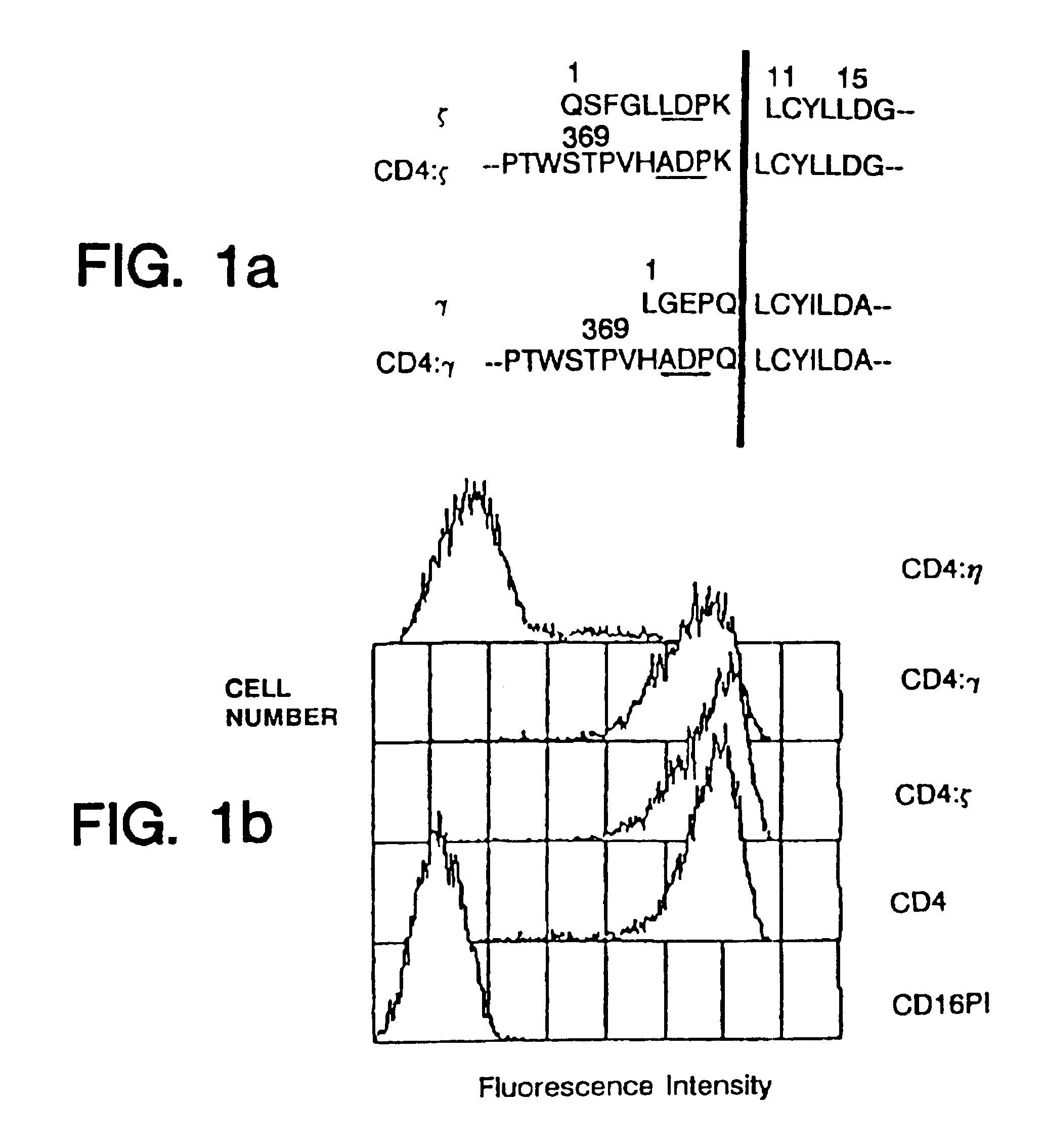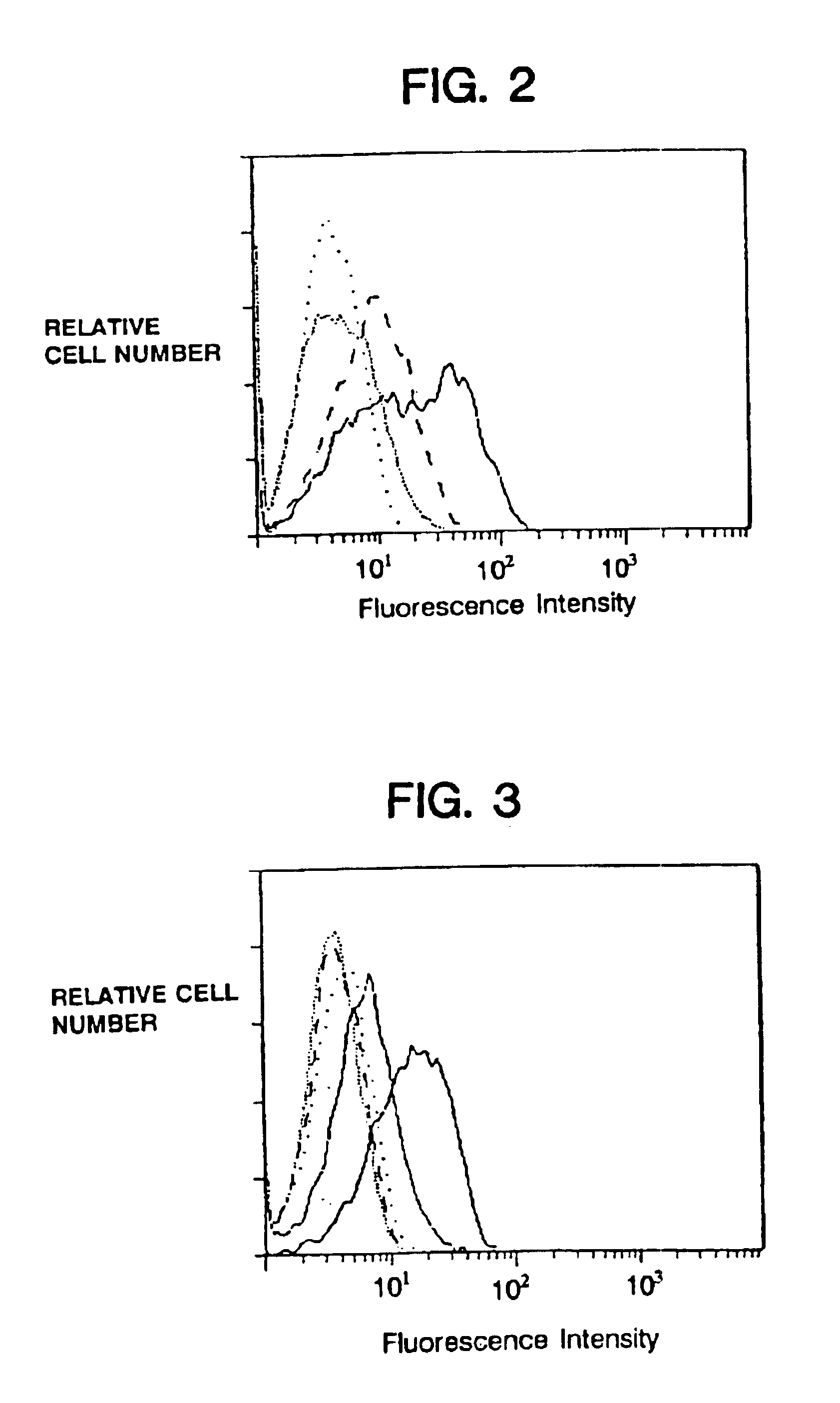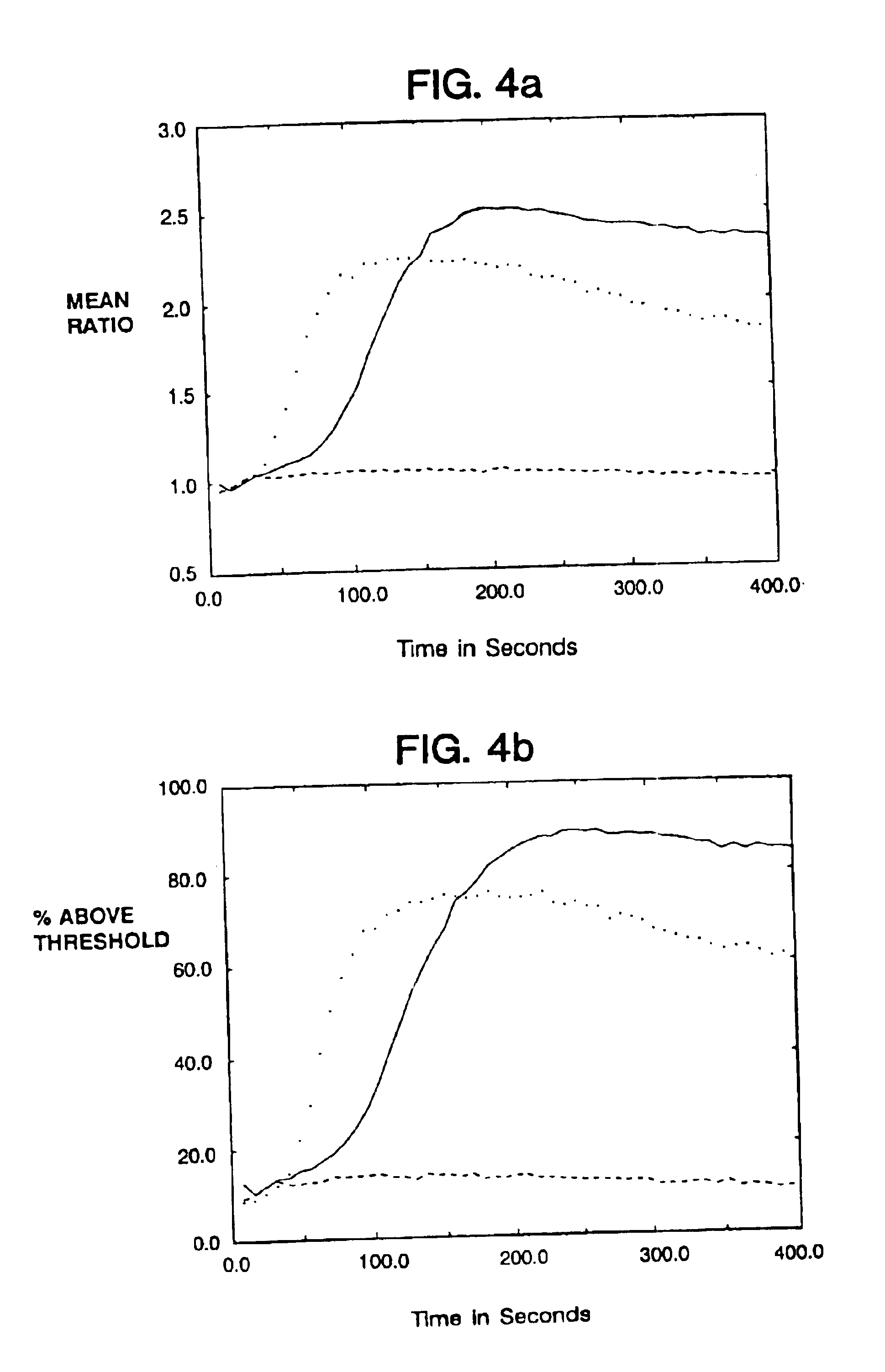Targeted cytolysis of HIV-infected cells by chimeric CD4 receptor-bearing cells
a cytolysis and chimeric cd4 technology, applied in the direction of peptide/protein ingredients, transferases, peptide sources, etc., can solve the problems of osmotic disequilibrium, lethal immunosuppression, and plasma membrane disruption
- Summary
- Abstract
- Description
- Claims
- Application Information
AI Technical Summary
Benefits of technology
Problems solved by technology
Method used
Image
Examples
example iii
CD4 Chimeras Can Associate With Other Receptor Chains
Cell surface expression of the macrophage / natural killer cell form of human Fc.gamma.RIII (CD16.sub.TM) on transfectants is facilitated by cotransfection with murine (Kurosaki et al., Nature 342:805-807 (1989)) or human (Hibbs et al., Science 246:1608-1611 (1989)) .gamma., as well as by human .zeta. (Lanier et al., Nature 342:803-805 (1989)).
Consistent with these reports, expression of the chimeras also allowed surface expression of CD16.sub.TM when delivered to the target cell either by cotransfection or by coinfection with recombinant vaccinia viruses (FIG. 2). The promotion of CD16.sub.TM surface expression by .zeta. was more pronounced than promotion by .gamma. (FIG. 2) in the cell lines examined, whereas native CD4 did not enhance CD16.sub.TM surface expression.
example iv
Asp .zeta. Mutants Do Not Coassociate with Fc Receptor
To create chimeras which would not associate with existing antigen or Fc receptors, mutant .zeta. fusion proteins which lacked either the intramembranous Asp or intramembranous Cys residue or both were prepared. Flow cytometry showed that the intensity of cell surface expression by the different mutant chimeras was not appreciably different from the unmutated precursor, and immunoprecipitation experiments showed that total expression by the chimeras was similar. As expected, the mutant chimeras lacking the transmembrane cysteine residue were found not to form disulfide linked dimers. The two mutant chimeras lacking Asp were incapable of supporting the surface expression of CD16.sup.TM, whereas the monomeric chimeras lacking Cys but bearing Asp allowed CD16.sub.TM to be coexpressed, but at lower efficiency than the parental dimer (FIG. 3).
example v
Mutant Receptors Retain the Ability to Initiate a Calcium Response
To determine whether crosslinking of the fusion proteins would allow the accumulation of free intracellular calcium in a manner similar to that known to occur with the T cell antigen receptor, cells of the human T cell leukemia line, Jurkat E6 (ATCC Accessior Number TIB 152, American Type Culture Collection, Rockville, Md.), were infected with the vaccinia recombinants and the relative cytoplasmic calcium concentration following crosslinking of the extracellular domain with antibodies was measured. Flow cytometric measurements were performed with cells loaded with the calcium sensitive dye Indo-1 (Grynkiewicz et al., J. Biol. Chem. 260:3340-3450 (1985); Rabinovitch et al., J. Immunol. 137:952-961 (1986)). FIGS. 4A-D shows the results of calcium flux experiments with cells infected with CD4:.zeta. and the Asp.sup.- and Cys.sup.- mutants of .zeta.. Crosslinking of the chimeras, reproducibly increased intracellular calci...
PUM
| Property | Measurement | Unit |
|---|---|---|
| concentration | aaaaa | aaaaa |
| pH | aaaaa | aaaaa |
| pH | aaaaa | aaaaa |
Abstract
Description
Claims
Application Information
 Login to View More
Login to View More - R&D
- Intellectual Property
- Life Sciences
- Materials
- Tech Scout
- Unparalleled Data Quality
- Higher Quality Content
- 60% Fewer Hallucinations
Browse by: Latest US Patents, China's latest patents, Technical Efficacy Thesaurus, Application Domain, Technology Topic, Popular Technical Reports.
© 2025 PatSnap. All rights reserved.Legal|Privacy policy|Modern Slavery Act Transparency Statement|Sitemap|About US| Contact US: help@patsnap.com



